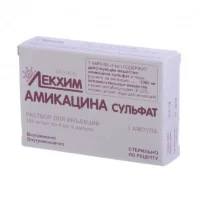Description
Levofloxacin Solution for Infusions 0.5% 100 ml. №1 Vial
Ingredients
- Each vial contains Levofloxacin 0.5% solution for infusion.
Dosage
- The recommended dosage of Levofloxacin solution for infusions is determined by the prescribing healthcare provider based on the specific condition being treated.
Indications
- Levofloxacin solution for infusions is indicated for the treatment of various bacterial infections, including respiratory tract infections, skin and soft tissue infections, and urinary tract infections.
Contraindications
- Do not use Levofloxacin solution for infusions if you have a history of hypersensitivity to Levofloxacin or other quinolones.
Directions
- Levofloxacin solution for infusions is administered intravenously as directed by a healthcare professional. It is important to follow the prescribed dosage and infusion rate carefully.
Scientific Evidence
- Levofloxacin, a fluoroquinolone antibiotic, inhibits DNA gyrase and topoisomerase IV enzymes in bacteria, leading to cell death. Clinical trials have shown its efficacy in community-acquired pneumonia, acute bacterial sinusitis, and complicated urinary tract infections.
- The drug’s broad spectrum of activity and favorable pharmacokinetic profile make it a valuable option in managing various infections.
Additional Information
- Complete the full course of Levofloxacin treatment as prescribed to prevent the development of antibiotic-resistant bacteria. Inform your healthcare provider about existing medical conditions, medications, and allergies before using the medication.





